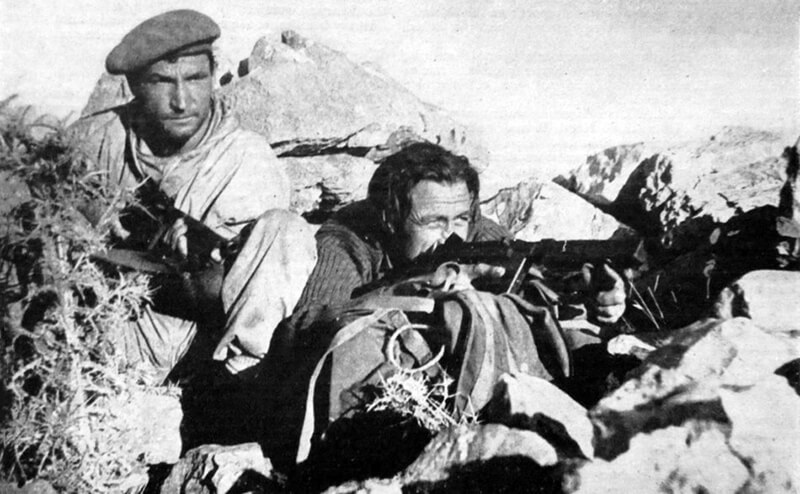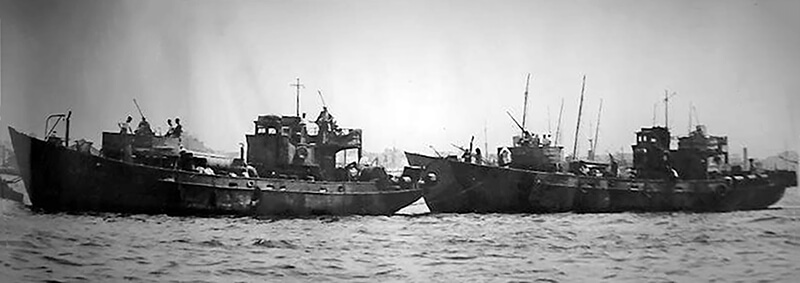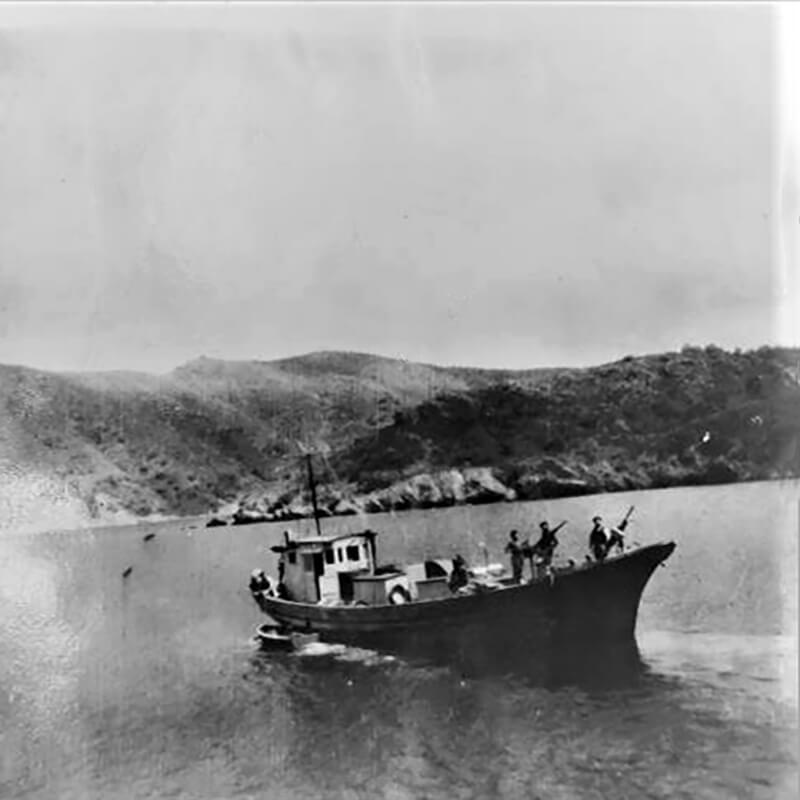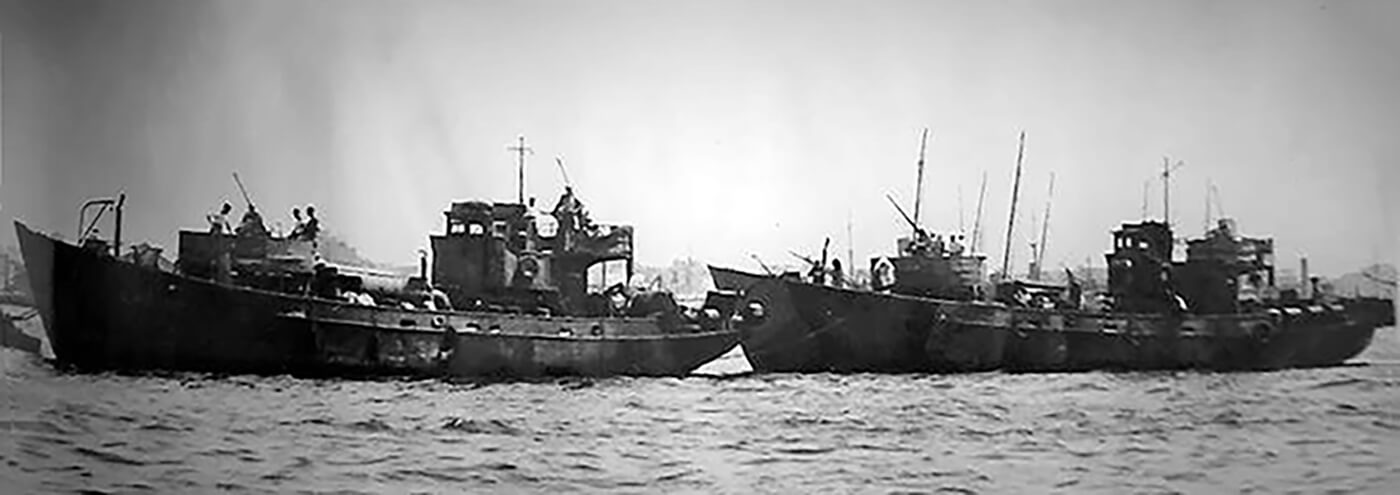| Page Created |
| August 2nd, 2024 |
| Last Updated |
| August 4th, 2024 |
| Great Britain |
 |
| Greece |
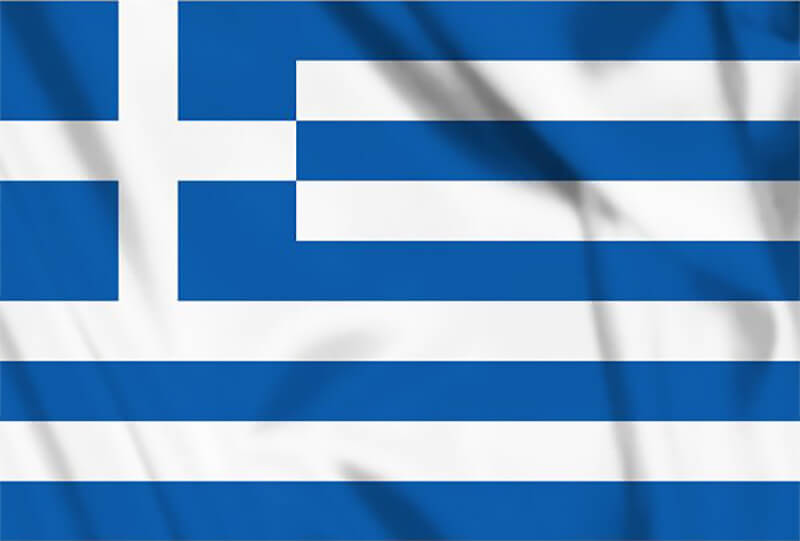 |
| Special Forces |
| Royal Marine Boom Patrol Detachment Sacred Band Special Boat Squadron |
| July 13th, 1944 – July 15th, 1944 |
| Operation Tenement |
| Objectives |
- Main Force: The primary objective is to neutralise the German headquarters located in the medieval castle overlooking the harbour in Symi Town, on the north side of the island.
- West Force: Attack the caique yard near the harbour, close to Symi Town. Disrupt enemy supply lines and destroy the shipyard facilities.
- South Force: Assaulting the monastery of Saint Michel situated in the southern part of the island. This force aims to secure the area and eliminate any German resistance.
| Operational Area |
Symi, Aegean Sea, Greece
| Allied Forces |
- Royal Marine Boom Patrol Detachment
- Special Boat Squadron
- Sacred Greek
| Axis Forces |
- German and Italian Garnison on Symi Island
| Operation |
Operation Tenement is a British special forces attack on the island of Simi in the German-occupied Dodecanese islands in the south-western Aegean Sea, occurring on July 13th, 1944 and July 14th, 1944, ordered by Brigadier D. J. T. Turnbull, the commander of the Raiding Forces Middle East.
In September and October 1943, during the Dodecanese islands campaign, the Germans oust the British from the Italian-held Dodecanese islands. German troops occupy the island of Simi on October 12th, 1943.
Symi is a familiar location for the Special Boat Squadron, but reaching the island presents significant challenges. Before the raiders can even attempt to land on Symi, they must first neutralise two formidable obstacles: two German destroyers berthed at Porto Lago in Leros. One of these is the Turbine, an Italian vessel commandeered by the Germans and converted into a torpedo boat.
Recognising the expertise required to destroy these destroyers, Major Lapraik seeks assistance from Brigadier Turnbull at Raiding Forces Headquarters. Brigadier Turnbull contacts the Royal Marines Boom Patrol Detachment, a unit renowned for their successful raid on enemy shipping in Bordeaux, which inspired the legend of the “Cockleshell Heroes.”
In early 1944, a section of this elite unit, now posted to the Middle East, eagerly accepts the assignment. They design Operation Sunbeam to attack Leros harbour. Three canoe parties paddle silently into Porto Lago and, using limpet mines, sink an ammunition ship and two escort vessels. They also severely damage the Turbine and the second destroyer. Both ships are eventually towed back to Athens for repairs, marking a significant tactical victory for Lapraik.
With the destroyers neutralised, Lapraik shifts his focus to the main objective. In the first week of July, he dispatches Macbeth on a reconnaissance mission to Symi. Upon his return, the stage is set for the final assault.
The force allocated to Operation Tenement comprises one hundred men of the Special Boat Squadron and 224 men of the Greek Sacred Band. Both groups are under command of Brigadier Turnbull the commander of Rading Forces Middle East. Turnbull divides his force into three distinct units for the operation on Symi Island. He, commands the “Main Force” with Major Lapraik as his second-in-command, targeting the German headquarters located in the medieval castle overlooking the harbour in Symi Town, on the north side of the island. Their primary objective is to neutralise this strategic stronghold.
Captain Stewart Macbeth is in charge of “South Force,” assigned the task of assaulting the monastery of Saint Michel situated in the southern part of the island. This force aims to secure the area and eliminate any German resistance.
Meanwhile, Captain Charles Clynes, leads “West Force”. His unit focuses on attacking the caique yard near the harbour, close to Symi Town. Their mission is to disrupt enemy supply lines and destroy the shipyard facilities.
Each force has specific objectives designed to weaken the German hold on the island and facilitate a coordinated assault to ensure the success of the overall mission.
| July 14th, 1944 |
The combined British and Greek force is delivered in ten motor launches, as well as schooners and caïques of the Anglo-Hellenic Schooner Flotilla. Lieutenant-Colonel Tryfon Triantafillakos of the Sacred Squadron and part of Main Force navigates the Aegean Sea aboard Motor Launches (M.L.) 348, 351, 354, 359, and 386. The sea is particularly rough, with short, furious waves threatening their progress. They reach Cape Aghia-Marina, east of Symi’s port, at one in the morning. The wind intensifies, and foam lines the breakers. Scouts onshore since the previous day report no enemy patrols. Triantafillakos and his men land and begin their march towards the town.
At Phanéroméni in the southern sector, West Force also lands without incident. However, South Force at Toli, in the western sector, faces difficulties. The exposed coastline is battered by the sea, and the commandos of the Raiding Forces, heavily laden and waist-deep in water, lose two Greek Officers to the waves.
Despite these challenges, all three groups adhere to their meticulously planned schedule. They establish supply depots for ammunition, potable water, and food at pre-determined locations. First aid posts are ready, and communications are secure. By four in the morning, Triantafillakos has positioned 3-inch mortar tubes to bombard the Hospitallers’ castle, and the gunners calculate their trajectories. Force B encircles Panormitis Bay and prepares for assault, while South Force sets up mortars among the graves in the cemetery to target Saint-Phanourios.
At five o’clock, all movement ceases. The Germans hear nothing but the waves and the howling wind. Darkness covers the island and the city. Suddenly, as dawn breaks, a flare lights up the sky, signaling the attack.
West Force, spends the night climbing the hill overlooking the harbour, carrying 3-inch mortars. By dawn, they are in position, watching as two “Ems” barges and a couple of German caiques sail out of the harbour and as soon as they are out of sight. Initially, the dawn light doesn’t reveal the coastal gun, which is too well camouflaged. However, the German crew inadvertently exposes their position. As dawn breaks, about ten men begin to move around, stretch, and then amble down to the house in the harbour. This movement provides the Bren gun crew with the opportunity to engage and target the coastal gun, crucial for the success of their mission.
At 06:15, Main Force, West Force and South Force fire simultaneously, creating a synchronised explosion. A deluge of 3-inch and 2-inch shells rains down on the harbour defences with mortar and machine gun fire. The German garrison is taken completely by surprise, and as they enter the harbour following the British craft, two German ferry barges are overwhelmed by gunfire and sunk.
Triantafillakos reports complete surprise, but the enemy quickly responds with 81 millimetres mortars and 20 millimetres guns, targeting the flashes of the Allied weapons. Despite the fierce exchange, the Allied officers, including Commander Kazacopoulos and Captain Messinézis, remain undeterred.
At 06:50, several Motor Launches enter the harbour and fire on the castle with their 40 millimetres guns. Two large German patrol boats emerge, their machine guns blazing, but they soon retreat under heavy fire. Around eight o’clock, Triantafillakos orders the mortars to move to elevation 133 and target the ramparts.
Pushing forward, Marantos’s men of the Sacred Squadron attack the customs building with grenades. By 08:20, they report occupying the port captaincy under heavy fire from nearby houses, with four wounded, one seriously.
The second objective is the high point known as Molo Point. Special Boat Squadron Group H takes this hill without encountering much initial opposition but is quickly counterattacked by a German force retreating from the main town. Charging up the hill, the Germans run into heavy small arms fire and a hail of grenades. A Greek platoon farther down the hill cuts off the Germans, who then surrender. Meanwhile, Captain Marantos’s team secures the waterfront, capturing boats along the quay.
The last objective is the castle just above the harbour. At 09:30, two German seaplanes and three fighters strafe the commandos, but the Allies continue advancing through the streets, capturing key intersections. The castle’s 20 millimetres guns keep firing, prompting Lieutenant Colonel Triantafillakos to call for a flanking mortar attack on the Castello’s guns. The Allies open a brisk fire on the castle’s battlements with Vickers machine guns and mortars. As they cross a bridge, a party of the Special Boat Squadron is pinned down and has to take whatever cover its men can find. The fighting in this little area is bitter, and it is here that most of the casualties are taken. However, as heavy mortar fire and a short-range bombardment by the guns of the motor launch flotilla concentrate on the castle. By noon, the commandos capture the fortified houses defending the approach to the castle. However, surrounded and under relentless mortar fire, the Germans and Italian garrison holds their fortified position.
At 12:30, the British recognise the need for a change in tactics, Brigadier Turnbull decides to send a petty officer from one of the captured Ems barges into the castle to inform the garrison commander of the hopelessness of their situation. The naval officer returns with an encouraging message: the Germans are willing to negotiate.
Turnbull first demonstrates the firepower at his disposal. Then, he sends Kenneth Fox, a young German-speaking lieutenant, into the castle, accompanied by Lieutenant-Commander Leslie Ramsayer, the naval liaison officer from Raiding Forces Headquarters.
For three hours, the men discuss surrender terms. The British become increasingly frustrated with the German commander’s delays. Finally, Brigadier Turnbull issues an ultimatum: surrender or face annihilation. This ultimatum has the desired effect.
By 14:00, the German-Italian garrison of Symi surrenders unconditionally. The Greek and British flags are raised over the Hospitallers’ castle. However, minutes after the last German soldier lays down his weapon, three Messerschmitts roar overhead and drop a stick of anti-personnel bombs on the harbour.
In the south of Symi, Stewart Macbeth’s South Force attacks the other German position in the Panormitis monastery is attacked. The Force blasts the Germans out of the monastery and pursues them to the edge of the island. The Germans find themselves trapped, with the grim choice of either surrendering or jumping to their deaths. Captain Macbeth assures the Germans that they will not be handed over to the locals for summary execution. With this assurance, the Germans surrender. The island is thus secured, and mopping-up ensures that all other possible strongpoints on the island are clear of German troops.
With their positions consolidated, the Raiding Forces start to plant demolition charges on objectives including gun emplacements and ammunition, fuel, and explosive dumps. The harbour is also targeted, and here 19 German caïques, some displacing as much as 150 tons, are destroyed. The sabotage teams also destroy other strategic and tactical targets, including seven hundred tons of caïques under construction, the mole installations, and the landing stage. Machine gun and mortar positions are leveled. The submarine cable blockhouse at Panormitis is dynamited, and the defensive works at Saint-Phanourios are razed. A massive explosion destroys the castle’s ammunition store detonates, nearly dislodging the walls. The surrounding houses crack, and a dust cloud darkens the sky. During this time, the Luftwaffe makes several attacks on the island, but these attacks have little effect.
With all the objectives taken and demolitions effected, Lapraik and Tzigantes decide that the time has come for the Allied force to evacuate the island. At 22:00, the Raiding Forces re-embark, taking their prisoners and captured equipment. The British and Greeks then withdraw with booty and prisoners. A small section of the Special Boat Squadron remains on the island to observe the island’s reoccupation by an enemy contingent from Rhodes.
| July 15th, 1944 |
When two German motor launches attempt to land men, but the Special Boat Squadron section opens fire and sets both craft on fire as they try to withdraw. The last of the Allied troops leave on a barge, and even though this encounters an S-boot, they have so much weaponry that they are able to open fire and sink the German craft for no loss.
That evening, just before midnight, the raiders return to their base with their prisoners loaded onto the two barges.
| July 16th, 1944 |
The Germans launch a counter-offensive, sending in a flight of bombers followed by a large number of infantry. When the soldiers step ashore, they find nothing but bacon rinds and the bodies of 21 fallen Germans.
| July 17th, 1944 |
General Maitland-Wilson congratulates Lieutenant-Colonel Triantafillakos and the Sacred Battalion in a telegram, while King George II of Greece also praises their success.
Triantafillakos is cited for his exceptional command and promoted to Colonel on the battlefield. Six weeks later, he receives official notification of his promotion. The Special Boat Squadron flotilla, now including captured German boats, relocates from Losta Bay to Pendzik Gulf and then to Deremen, preparing for further raids across the Aegean Sea.
| Aftermath |
The toll includes 10 Germans killed, 17 Germans and Italians wounded, 41 Germans, and 106 fascists captured. Allied losses are two commandos drowned during the western landing and seven wounded in the Sacred Squadron, with four British wounded on the side of the Special Boat Squadron.
The captured loot includes two torpedo boats, 32 pieces of heavy or medium-heavy weaponry, 24 machine guns, numerous submachine guns, and individual weapons. Twenty tons of food from the German warehouses are distributed to the civilian population. Nineteen German caïques and two German ferry barges are destroyed. The Raiding Forces also destroy other strategic and tactical targets, including seven hundred tons of caïques under construction, the mole installations, and the landing stage. Machine gun and mortar positions are levelled. The submarine cable blockhouse at Panormitis is dynamited, and the defensive works at Saint-Phanourios are razed. A massive explosion destroys the castle’s ammunition store.
The raid is the last of its kind in the Aegean Sea for the Special Boat Squadron, and as a result, the Greek Sacred Band takes over the role of raiding in the Aegean as they are now fully trained and deemed politically reliable. In August 1944, the Special Boat Squadron joins the Long Range Desert Group for operations in the Adriatic Sea, on the Peloponnese, in Albania, and finally in Istria. So effective are they that by 1944, a force of some 200 to 300 Special Boat Squadron and men of the Greek Sacred Band is pinning down six German divisions.
As the Allies advance, the German High Command in the Aegean undergoes changes, with von Klemann replaced by General Wagner. Despite the dire situation, the Germans in the Aegean continue to resist fiercely.
| Multimedia |
